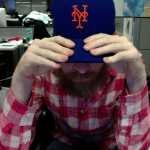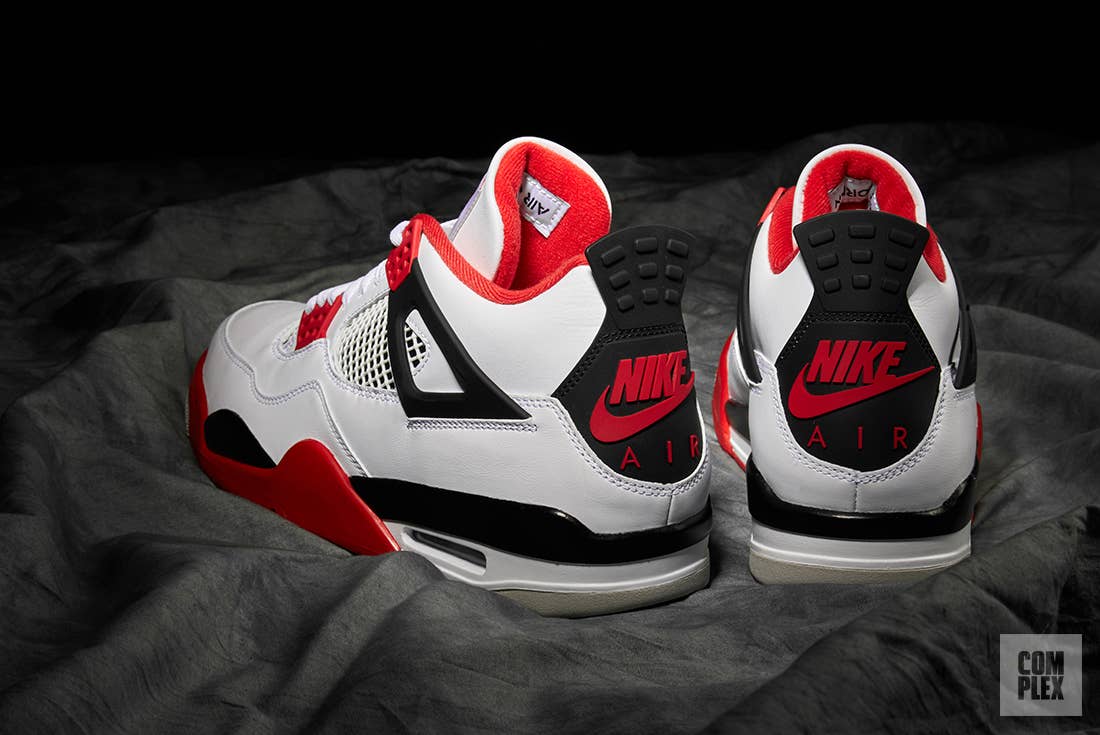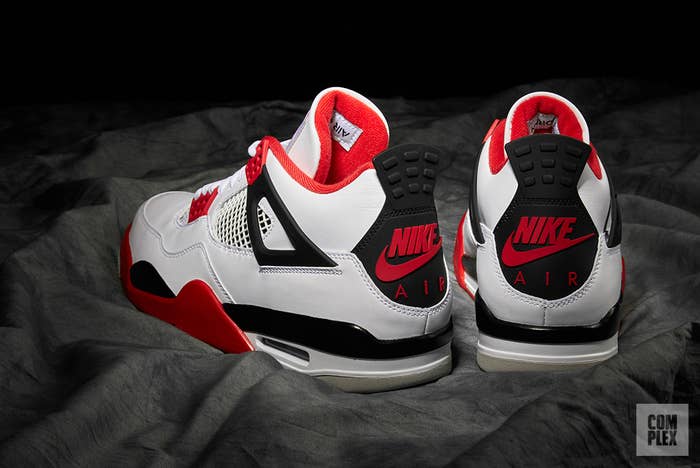
The "Fire Red" Air Jordan 4 was the final colorway of the Air Jordan 4 to release at retail, but one of the first Michael Jordan wore on court. He debuted the Air Jordan 4 on All-Star weekend in February of 1989 in Houston, Texas, and broke out the Fire Red pair a little over a month later on March 21 in Inglewood against the Lakers. He scored 21 points and added 16 assists in a one-point Bulls win. For those of us who obsessively watched Jordan’s feet to see what was coming, this was a big deal.
It was less of a big deal for the man who designed them. Tinker Hatfield took over the Air Jordan program in 1987 and designed the Air Jordan 3 like something approaching art. For the following season, he designed the Air Jordan 4 for the reigning MVP and Defensive Player of the Year as something more akin to a weapon of war. The basic shape and structure didn't change much from the revolutionary 3—a ⅝ cut with visible Air in the heel and a large plastic heel counter—but the 4 was considerably lighter, replacing exotic skins with synthetic leather and a new mesh that Nike hadn't used before. "It was meant to be a little more utilitarian," Hatfield says of the first two Air Jordans he designed. "Michael's first, 'Whoa.' Second he's gonna go out and freakin' kick some ass."
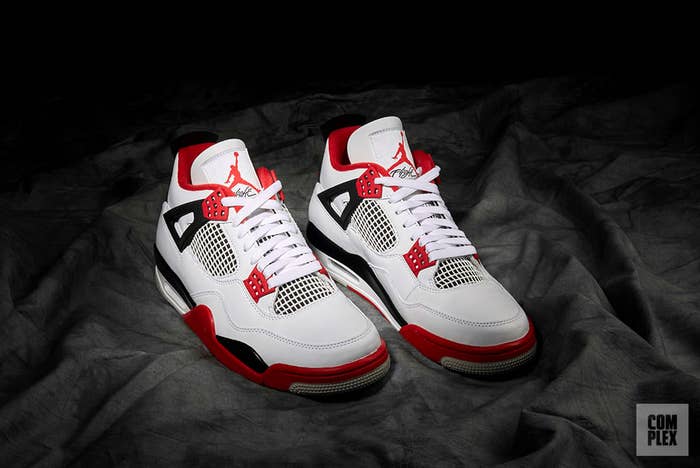
The rollout was more or less "if it ain't broke don't fix it," debuting at All-Star weekend (although no Dunk Contest second colorway reveal this time) with a new Wieden & Kennedy black-and-white Mars Blackmon commercial. And like the Jordan 3, the 4 launched first in "White/Cement" and "Black/Cement," with ensuing late-season follow-ups in "White/Black/Red" and "White/Blue." The “White/Black/Red” colorway in particular was a through line to the most commonly seen on-court colorway of the Air Jordan 1, a white-based, Bulls-themed shoe that Jordan wouldn't get fined for wearing.
It might seem strange now to a generation used to superstars wearing special makeups on a seemingly daily basis, but in the late '80s, Air Jordans themselves were Michael Jordan's player exclusives. Outside of some one-offs he wore as a rookie as Nike figured out exactly what "Air Jordan" was going to be, Jordan wore the same colorways you could find in stores, with nary a personal addition. The "23" he had embroidered on the outer heels of his Jordan 5s the following season was the exception, not the rule. And while they were marketed as the best basketball shoes in existence, hardly any other players, save a Sam Vincent here or a Kevin Johnson there, wore them on NBA courts.
But people sure wore them everywhere else. Like Rakim said in '87, constant elevation causes expansion. And Jordan's rise coincided with the sneaker itself going from subculture signifier to mainstream status symbol. Then-17-year-old LL Cool J rocking a pair of black and red Jordan 1s on the inner sleeve of Radio, arms crossed in a b-boy stance, was just the beginning.
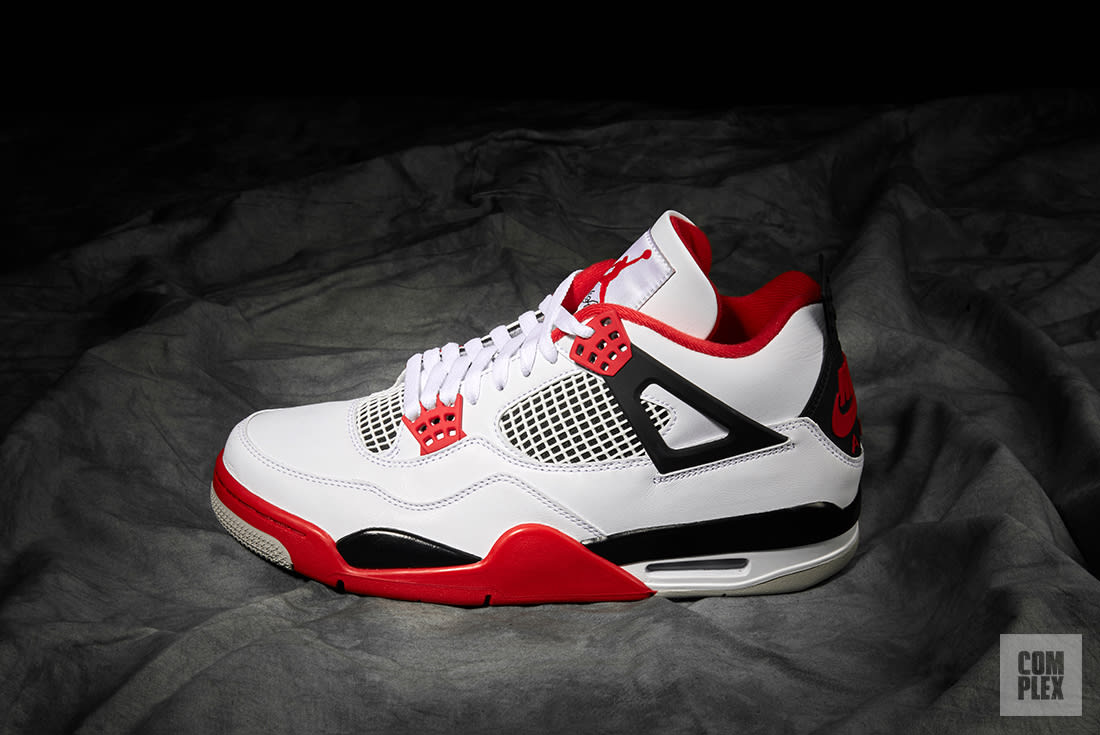
The Air Jordan 1 was marketed and sold with the hopes it would become a status symbol. The Air Jordan 4, launched just four years later, was launched as a status symbol. LL paired his Jordans with a plain black tee, black jeans, and a prior status symbol: a Kangol. Ice-T wore the “White/Black/Red” Jordan 4s on the cover of his "What Ya Wanna Do" 12" with a whole matching Bulls fit.
The Jordan 4 entered the cultural realm at the same time it entered the sporting world. On May 7 of '89, Michael Jordan hit The Shot over Craig Ehlo in Cleveland, dispatching the favored Cavaliers in five hard-fought games. On July 21, Spike Lee released Do the Right Thing, which featured a whole scene built around the Air Jordan 4 that really defined what a pair of sneakers meant to someone, especially when they were $100. $108 with tax.
Here's the real crazy part, though. Despite all that, despite the on-court heroics, the theatrical promotion, the utterly brilliant commercials, the fact that they released a paltry four colorways over the course of a year rather than four on a single day—the white, black, and red joints didn't sell out. Not everywhere. I bought my pair on sale—take that, Buggin' Out—around the time when the Air Jordan 5 launched in 1990 and stores were looking to clear old stock. I wore them into the ground, to the point where the wings broke off, the mesh ripped and actual letters peeled off the heel tabs. I carefully cut the Flight patches off the tongues—I still have those somewhere—and then bought a pair of "Fire Red" 5s on sale when the 6s came out.
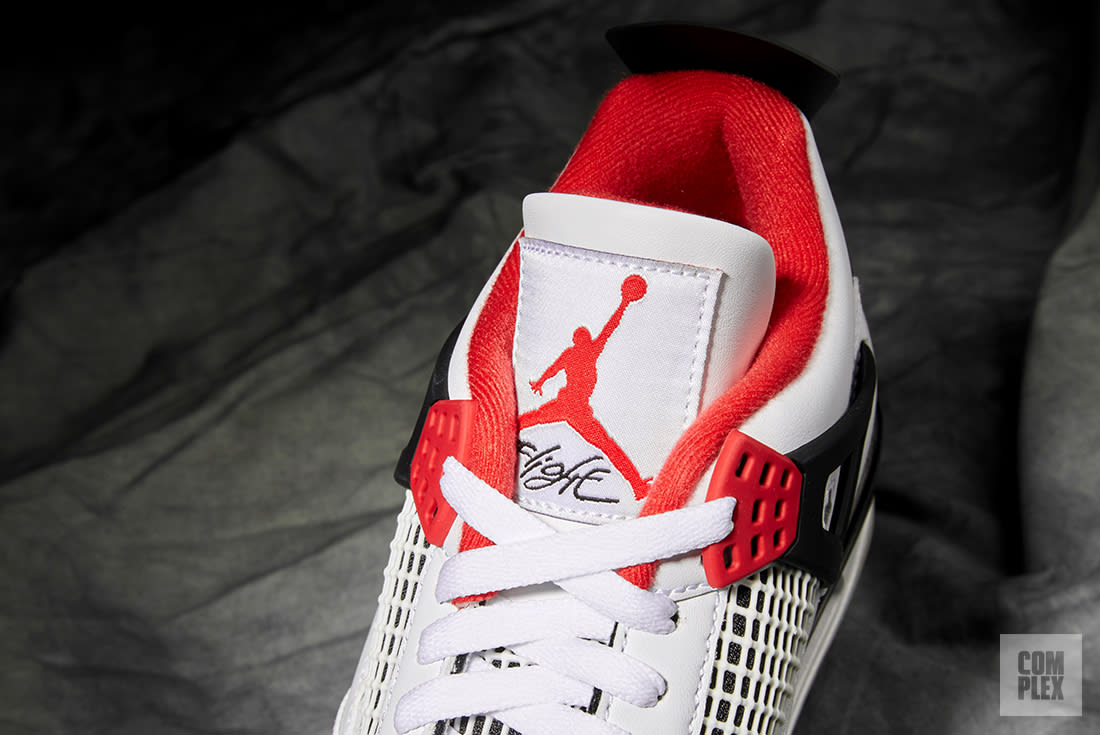
But enough about me. The Fire Red 4 has retroed three times technically, the first two times in back-to-back years no less. The colorway first was revived with 2005's lasered pair, which besides the lasering featured translucent red lace tabs. The following year saw a more proper (and more widely available) retro, with Mars Blackmon's head peeping up on the outer heels and a Jumpman on the heel counters. The 2012 retro was the most straightforward to date, Mars-free, but again with the Jumpman heel logo.
The 2020 drop finally brings back the Nike Air branding, the third Air Jordan 4 to receive the O.G. treatment, leaving only the "Military Blue" in Jumpman purgatory. Hard to believe as it may be, it's been nearly 20 years since Jordan started putting the Jumpman on retro heels, and it's become the default for many—especially those who weren't yet born when MJ received that inbounds pass, took two hard dribbles to his left and ruined Craig Ehlo's life. But the Nike Air branding returns a rightful balance to the silhouette, back when Air Jordan wasn't the flagship of its own brand, but the pinnacle basketball shoe for Nike.
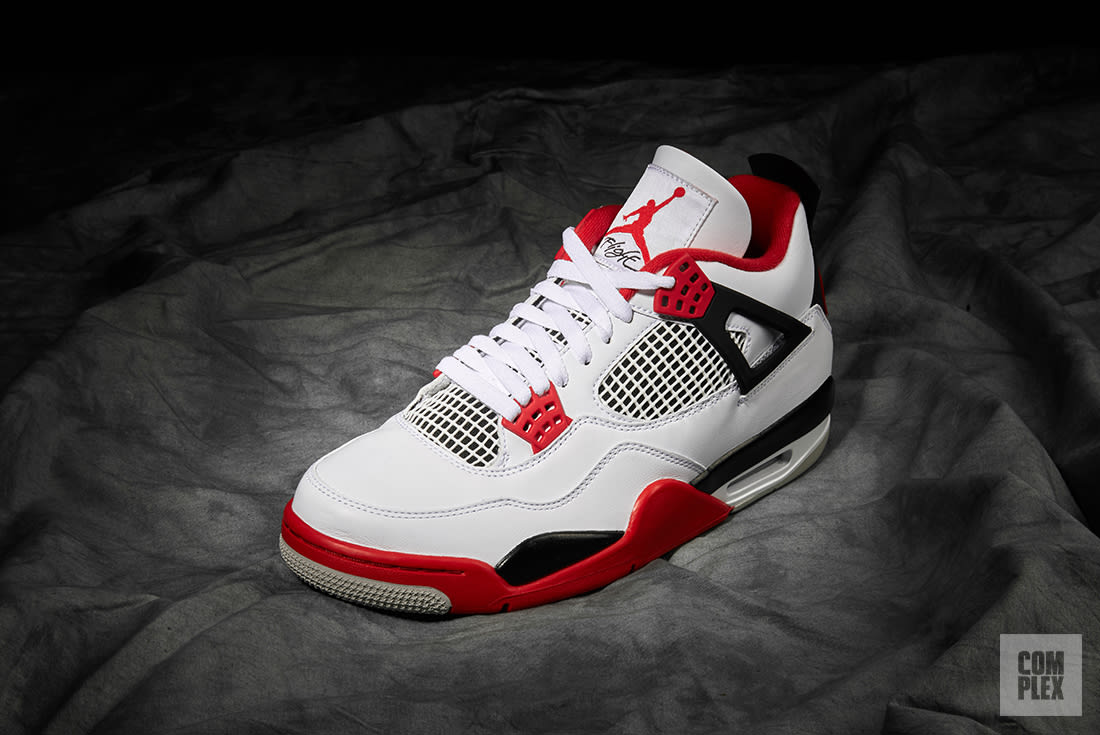
The Fire Reds tend to be the one Jordan 4 that gets lost in the sauce a little bit—The Shot was in "Black/Cements," Buggin' Out wore "White/Cements" (a pre-release prototype at that), and the "Military Blues" were a lifestyle twist before that was even a thing. Jordan didn't wear the "Fire Reds" in a playoff series or—best I could tell via some YouTube- and Getty-based research—for a 50-point game. Save that Ice-T 12" cover (which, respectfully, was no "New Jack Hustler") they didn't really have "That Moment" which tends to solidify a Jordan colorway as legend.
But, to bring things full circle back to Tinker Hatfield for a minute, maybe that's exactly the way it should be. If the Jordan 3 brought the attention to MJ's feet, the 4 was meant to bring the attention back to Jordan himself.
"The IV was like, 'Well, can you top that' So I kind of went away from the exotic and went more technical," Hatfield says. "There's not a big inspirational story. It's a little bit more like, you know what, we're going to do this new mesh, we're gonna make this a little lighter, and it's gonna look a little different."
It still does.
